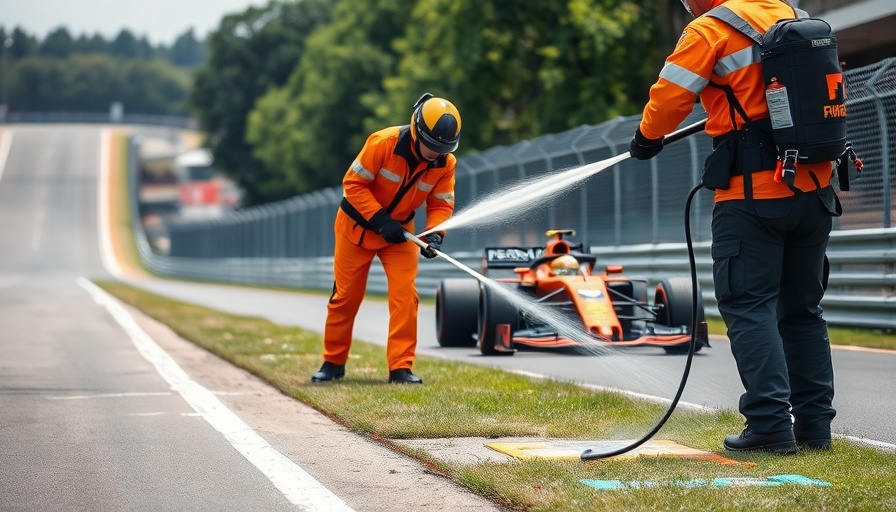
FIA's Strategic Approach to Trackside Fires: Balancing Safety and Spectacle
The FIA has set forth a new protocol for handling trackside fires during the Japanese Grand Prix, a decision driven by recent incidents that disrupted the race weekend. Following multiple fires near the Suzuka circuit, officials are eager to maintain the flow of the race while ensuring the safety of everyone involved.
Understanding the Threat: Fires on the Track
During practice sessions, grass fires ignited due to flying sparks from cars, particularly during high-speed maneuvers. High winds further exacerbated these incidents, leading to quick-fire outbreaks that required urgent attention. Gabriel Bortoleto notably triggered a fire when he put two wheels off the track, marking a notable moment that highlighted the risks at play in Formula 1 racing.
Innovative Fire Management: A New Protocol
The FIA's protocol aims to minimize race interruptions. They will primarily utilize Virtual Safety Cars (VSC) when the field remains closely packed, allowing crews to control small fires without resorting to a full red flag. Should conditions heighten, such as rapidly spreading flames, race control might implement a red flag as a last resort. This approach reflects an intent to keep the excitement of Formula One intact, even amid dangers on the track.
Looking Ahead: Weather as an Ally
Interestingly, the FIA considered the idea of intentionally scorching the grass to prevent fires but quickly abandoned it due to a forecast of rain. With moisture expected to hit the circuit prior to the race, officials remain hopeful that this will help suppress any fire risks, ensuring a safer racing environment.
Conclusion: Safety in the Spotlight
The measures outlined by the FIA underline a critical balance between ensuring the spectacle of the Grand Prix and safeguarding racers and officials. As the season progresses, the Formula One community will be watching closely to see how well these protocols hold up in real race conditions.
 Add Row
Add Row  Add
Add 

 Add Row
Add Row  Add Element
Add Element 




Write A Comment